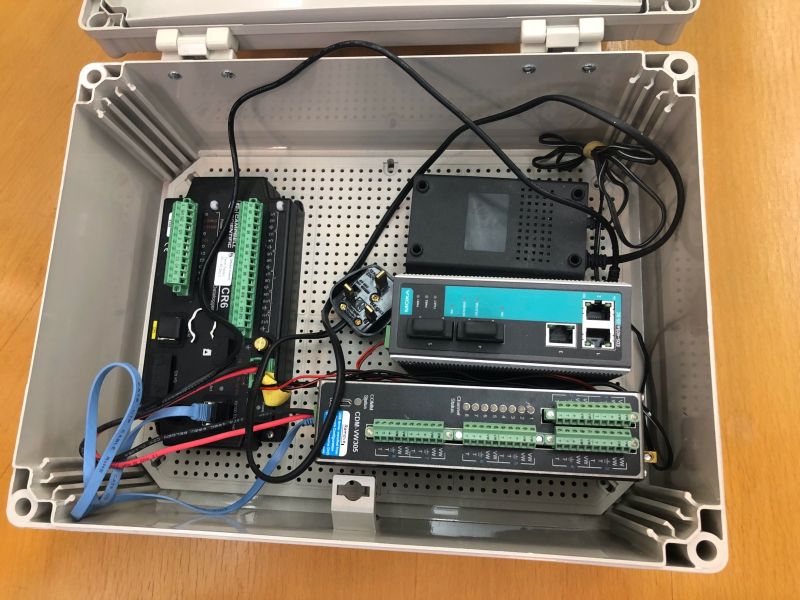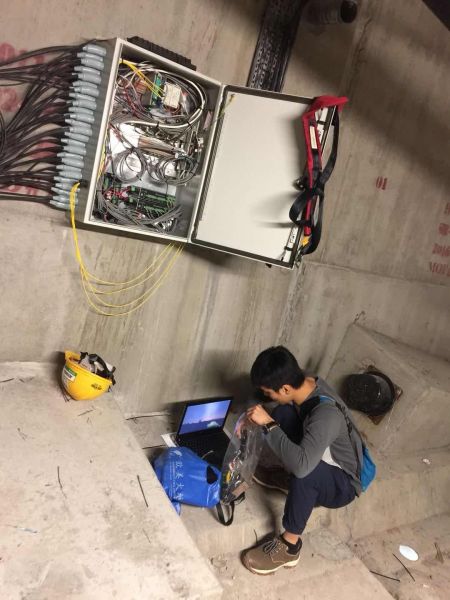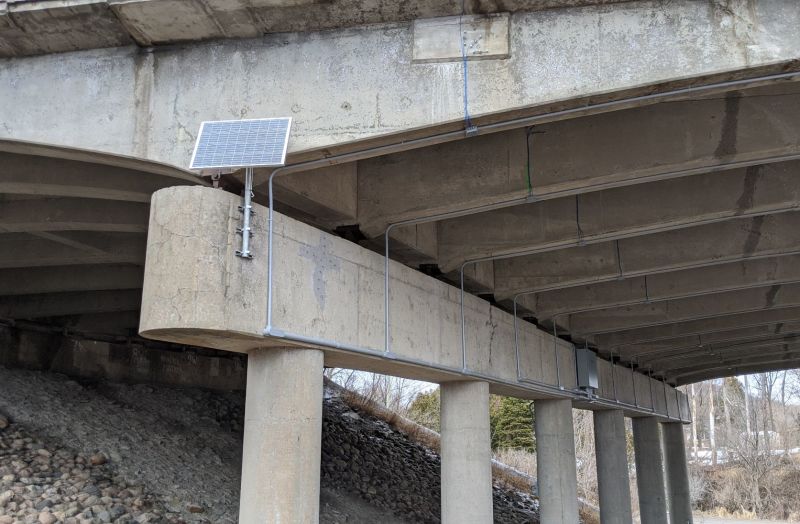Why Is the CR6 the Preferred Automated Monitoring Platform for Geotechnical Applications Worldwide?
by Michael Adams | Updated: 01/08/2024 | Comments: 0

If you’re not using a CR6 Automated Monitoring Platform for your geotechnical application, you may be missing out on some key benefits that could help ensure the success of your instrumentation and monitoring network. Based on my 30 years of experience with data-acquisition systems, I’ll share with you why the CR6 is the automated monitoring platform of choice for geotechnical applications.
Flexibility and Other Benefits
You may not know this, but the CR6 has unmatched flexibility to handle any instrumentation task. The CR6 is unique in terms of being able to offer you so much in one automated monitoring platform:
- 12 universal inputs that can be individually configured for your analog or digital functions
- 24-bit A/D converter that provides better measurement resolution and ease of use
- Extreme measurement resolution of 50 nanovolts to differentiate even slight changes in your measurement values
- An embedded web page for direct connection via your web browser
- Support for your static vibrating wire measurements using patented VSPECT® spectral-analysis technology
- Simple serial sensor integration and measurement with SDI-12, RS-232, and/or RS-485
- Multiple digital inputs that support a variety of communications and internet protocols including SPI, Modbus, SMTP/TLS, and HTTP(S)
I realize that, at this time, your project may not require multiple sensor interface options, a 50-nanovolt measurement resolution, or even the ability to hit the internal web page from any browser. But, rest assured that these capabilities and features are in every CR6 that we build and ship from our Logan office—ready when you need them.
The flexibility of the CR6 extends to offering you the ability to integrate with multiple vendor sensor options. This means you don’t have to replace your existing sensors with new equipment.
Something else that impresses me about the CR6 is its calibration. When you purchase a CR6, we guarantee the accuracy to meet our written specifications over a temperature range of -55° to +85°C.
Did I mention this automated monitoring platform has low power requirements? The CR6 has a quiescent current drain of less than 1 milliamp. This is great if you’re relying on limited power resources (i.e., solar panel and battery).
Benefits Specific to the Geotechnical Industry
When we set out to design the CR6, we had in mind to design a platform specific to the geotechnical industry. At Campbell Scientific, we envisioned a platform that would work well with vibrating wire technology, especially in applications where the sensors are permanently installed.
You may not know this, but we have quite a bit of experience with vibrating wire technology. In fact, we built our first vibrating wire sensor interface, the AVW1, in 1986. While the vibrating wire sensor is king for geotechnical monitoring, we recognized the importance of other technologies such as RS-485, SDI-12, 4-20 mA, and ratio-metric mv/V sensors. In many geotechnical projects, all these sensor technologies are required by the project planners or asset owners. Because the CR6 is so broadly flexible, it can integrate with these various sensor technologies and has become the preferred automated monitoring platform that geotechnical sensor manufacturers resell. In fact, they will often use the CR6 for their own in-house sensor validations or calibrations.
Practical Applications
There are likely thousands of applications where the CR6 works in the background, making all these types of measurements. The data is then either uploaded to a cloud host or a central server, or the data is telemetered through a radio network back to a central PC.
Some projects are big; some projects are small; but all are equally dependent on an accurate, reliable, and proven automated monitoring platform. While there are so many critical projects around the world that use the CR6, I’d like to briefly share just a couple of them with you.
The Hong Kong-Zhuhai-Macao Bridge (HZMB)

Currently, the HZMB is the longest sea-spanning bridge in the world at 29.6 km (18 mi). Because the bridge is subjected to extreme weather conditions, it is crucial to monitor its structural health—throughout its entire length. For this project, the CR6 was matched with the high-speed Granite™ VWire 305 dynamic vibrating wire analyzer for unparalleled, long-term stability and true return to zero of vibrating wire sensors.
With the high probability of lightning storms in the area around the bridge, fiber optic-to-Ethernet converters were chosen to connect the many miles of communications along the bridge. Each CR6 has a dedicated location along the length of the bridge, complete with multiple VWire 305 analyzers to accommodate the number of sensors designated for each location.
In addition to using vibrating wire sensors, the customer provided and installed anode-ladder corrosion sensors on each CR6 to monitor the changes in corrosion depths over the lifetime of the project.
To learn more, read our Hong Kong: Long-Term Monitoring for the World’s Longest Sea Crossing case study.
Canadian Overpass

The CR6 and multiple VWire 305 analyzers were also used in a project to monitor the structural integrity and principal stresses induced in a concrete overpass. Because of its simultaneous multi-channel measurements, the VWire 305 was a perfect choice to measure the vibrating wire strain gages, which were configured in a rosette pattern. The CR6 and VWire 305 analyzers captured the high traffic loads crossing the overpass to help determine the functional life and health of the structure.
For more information about this project, read our Canada: Structural Health Monitoring of an Overpass case study.
In Summary
So, why should you choose Campbell Scientific automated monitoring platforms, and specifically the CR6, for your next geotechnical project? These are some reasons I came up with:
- You trust Campbell Scientific as a reputable company that has been in business for 50 years and has a global footprint with 13 regional offices.
- When you need it, you know you can turn to us for unparalleled customer support.
- You can rest assured that we are dedicated to the needs of the geotechnical market, putting our hearts and souls into the functionality, performance, and success of our products and company name.
When you deploy a product with the Campbell Scientific logo on it, you know you are getting 50 years of innovation, dedication, and commitment from our company and employees to ensure you are in the very best hands and set up for both short- and long-term success. As employees, we thrive knowing we have helped make so many clients successful in their business endeavors, various lines of work, and in the accompanying research and development necessary to keep moving technology and knowledge forward. Our thanks go to you for giving us the opportunity to partner with you on your geotechnical projects.
To learn more about implementing a CR6 Automated Monitoring Platform in your next geotechnical project, contact our infrastructure specialists at (435) 227-9040.
















 Michael Adams is a Sales Engineer for the infrastructure and geotechnical markets at Campbell Scientific, Inc. He has a degree in Electronic Systems, which he has applied for more than 30 years in system design, field deployment, and system longevity/reliability—with a strong focus on instrumentation and field troubleshooting. When he's not working, Michael can be found cycling, skiing, or flyfishing.
Michael Adams is a Sales Engineer for the infrastructure and geotechnical markets at Campbell Scientific, Inc. He has a degree in Electronic Systems, which he has applied for more than 30 years in system design, field deployment, and system longevity/reliability—with a strong focus on instrumentation and field troubleshooting. When he's not working, Michael can be found cycling, skiing, or flyfishing.
Comments
Please log in or register to comment.